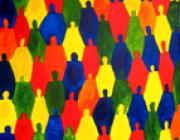When slower is faster
| Title | When slower is faster |
| Publication Type | Journal Article |
| Year of Publication | 2015 |
| Authors | Gershenson, C, Helbing, D |
| Journal | Complexity |
| Volume | 21 |
| Pagination | 9–15 |
| ISSN | 1099-0526 |
| Keywords | cascading effects, collective motion, Evolution, phase transitions |
| Abstract | The slower is faster (SIF) effect occurs when a system performs worse as its components try to do better. Thus, a moderate individual efficiency actually leads to a better systemic performance. The SIF effect takes place in a variety of phenomena. We review studies and examples of the SIF effect in pedestrian dynamics, vehicle traffic, traffic light control, logistics, public transport, social dynamics, ecological systems, and adaptation. Drawing on these examples, we generalize common features of the SIF effect and suggest possible future lines of research. {\copyright} 2015 Wiley Periodicals, Inc. Complexity 21: 9–15, 2015 |
| URL | http://arxiv.org/abs/1506.06796 |
| DOI | 10.1002/cplx.21736 |
- Log in to post comments
- Google Scholar
- DOI
- BibTeX
- RTF
- Tagged
- MARC
- EndNote XML
- RIS

